Buddhist schools at the time of the Second Council at Vaisali (and the subsequent Mahasamghika Council).
Part 7
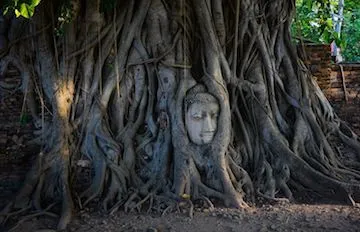
In Part 2 of this series, we looked at the Second (and First) Council of Buddhism, and gave a general overview of: who participated, what was discussed, where it was held, and why it was necessary to convene it in the first place. As was mentioned in Part 2, the Second Council had no president, but instead, eight elders formed a body of referees to deal with the raised disputations. Four elders were from the East, and four from the West. The second Buddhist Council was held at Vaisali, about 100 years after the Buddha’s final Nirvana.
Two schools existed after the schism that resulted from the proceedings of the Second Council:
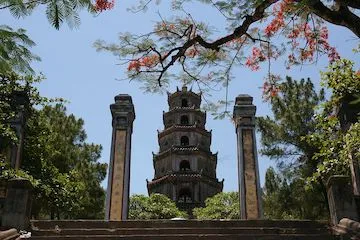
The Sthaviravada — school of the elders
The Theravada Vinaya mentions the ten non-permissible actions of the Vajjian monks, discussed in part 2 of this series, as the reason why the Second Council was held. This shows the Sthaviravada school accentuated the importance of the codes of conduct.
The followers of the Sthaviravada accepted the outcome of their own Second Council at Vaisali, and rejected the outcome of the subsequent Mahasamgiti council that was held afterwards by the Vatsiputriya followers.
The Dipavamsa account mentions the Mahasamghika school in a bad light, that they made alterations to the ‘original’ Sutra and Vinaya texts, changing the arrangement of the texts, as well as the way in which they should be interpreted.
Concerning the status of attainment of the Arhat compared to the Buddha, the Mahasamghika argued that the Arhats realization was not the equivalent of the Buddha, as the Arhat realized the truth of the emptiness of the individual self (pudgala sunyata), but not the emptiness of all conditioned worldly objects (dharma sunyata).
According to the Theravada, the Arhat is fully emancipated, the same as the Buddha; the Arhat has realized the excellent goal (sadattho), is free from aversion and craving, hatred, and ignorance, free from all impurities, and relieved of the burden of the attachment to the clinging aggregates (khandhas).
The Mahasamghika — school of the great following
The Sarvastivada account of Vasumitra mentions the five points of Mahadeva, also discussed in part 2 of this series, as the reason why the Second Council was held. This shows the Sthaviravada school accentuated the importance on doctrinal disagreements.
The followers of the Mahasamghika rejected the outcome of the Sthaviravada Second Council at Vaisali, and held their own subsequent Mahasamgiti (great congregation) afterwards. In more detail, they rejected the following parts, and considered them not being the word of the Buddha:
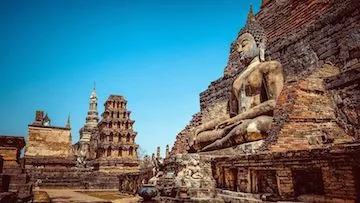
- The Parivara (concluding part of the Vinaya in nineteen chapters, being a summary of the whole Vinaya).
- The six books of the Sthaviravada abhidhamma pitaka.
- The Paṭisambhidamagga (twelfth book of the Khuddaka Nikaya; an Abhidhamma type text, explaining how analytical knowledge can be acquired).
- The Niddesa (commentarial work of parts of the Sutta Nipata, included in the Khuddaka Nikaya; divided into two books: Culla-Niddesa, Maha-Niddesa).
- Some parts of the Jatakas (tenth book of the Khuddaka Nikaya, containing Buddha’s ‘former birth’ stories).
The Mahasamghika school can be considered as the forerunner of Mahayana, the great vehicle of Buddhism that developed in full detail centuries later. The Mahavastu text, the first book of the Vinaya of the Lokottaravada, a branch school of the Mahasamghika, includes many Mahayana traces—especially the full detailed treatment of the ten stages of the path (dasabhumi) that are considered a Mahayana doctrine.
According to Vasumitra, the Mahasamghika original doctrines (mula-samaya) held that the Buddha was transcendental (lokottara). The Mahasamghika had fifteen doctrinal points concerning the Buddha and the Bodhisattva, of which the transcendental nature of the Buddha was the foremost one. There is a big difference though: The Buddha that is discussed by the Mahasamghika is not the historical Buddha. Their standpoint is, that the historical Buddha is only the Manifested Body (nirmana-kaya) of the Enjoyment Body (sambhoga-kaya), whereas his transcendental nature is the Dharma Body (dharma-kaya).
According to the Chinese pilgrim Yuan-Chuang, the Mahasamghika school divided their canon of Buddhist texts into five parts:
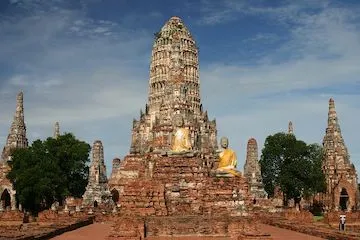
- Sutra (teachings of the Buddha)
- Vinaya (codes of conduct)
- Abhidhamma (the higher teachings, commentarial and analytical in nature)
- Dharani (texts dealing with specific spiritual powers)
- Miscellaneous
Archeological evidence exists, in the form of inscriptions, referencing the Mahasamghika school by name:

In the next article, the Buddhist schools at the time of the Third ‘Asoka’ Council will be discussed.
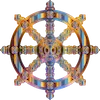
- Introduction to the history of Buddhist Councils and Schools-Part 1
- The Buddhist Councils — Who, when, where, and why?Part 2
- The Buddhist Councils — Who, when, where, and why?Part 3
- The History Of ‘Northern Buddhists’ of Sarvastivada - Part 4
- The History Of ‘Northern Buddhists’ of Sarvastivada - Part 5
- Buddhist schools at the time of the First ‘Maha-Kasyapa’ Council at Rajagaha. - Part 6
- The Ten Stages of the Mahayana Bodhisattva Path-The Two Preliminary Stages-Part 1
- The Ten Stages of the Mahayana Bodhisattva Path-The Two Preliminary Stages-Part 2
- The Ten Stages of the Mahayana Bodhisattva Path-The Two Preliminary Stages-Part 3
- The Ten Stages of the Mahayana Bodhisattva Path-The Two Preliminary Stages-Part 4
- The Ten Stages of the Mahayana Bodhisattva Path-The Two Preliminary Stages-Part 5
- The Ten Stages of the Mahayana Bodhisattva Path-The Two Preliminary Stages-Part 6
- The Ten Stages of the Mahayana Bodhisattva Path-The Two Preliminary Stages-Part 7
- The Ten Stages of the Mahayana Bodhisattva Path-The Two Preliminary Stages-Part 8
- The Ten Stages of the Mahayana Bodhisattva Path-The Two Preliminary Stages-Part 9
- The Ten Stages of the Mahayana Bodhisattva Path-The Two Preliminary Stages-Part 10
- The Ten Stages of the Mahayana Bodhisattva Path-The Two Preliminary Stages-Part 11
- The Deathless In Buddhism
- The "Timeless" Teaching-Being Beyond Temporality
- The Nine Successive Cessations In buddhist Meditations - Part 1
- The Nine Successive Cessations In buddhist Meditations - Part 2
- The Nine Successive Cessations In buddhist Meditations - Part 3
- The Twelve Links Of Dependent Origination
- THINGS to DEVELOP and THINGS to AVOID
- The First Noble Truth
- The Second Noble Truth
- The Third Noble Truth
- The Fourth Noble Truth
- 10 Fold Path Series
- EATING MEAT — WHY THE BUDDHA WAS NOT A VEGETARIAN
I will flag comment spam at 1% strength. If you keep on spamming my post, I will flag you at 100%. I don't care if you have limited English abilities, write a couple of sentences about this article, no copy-paste, please. I will flag: one sentence comments, links to your blog and begging for up-votes and follows. Also, I will flag comments that have nothing to do with my blog's article. I will also check your comment section to see if you have been comment spamming on other blogs.